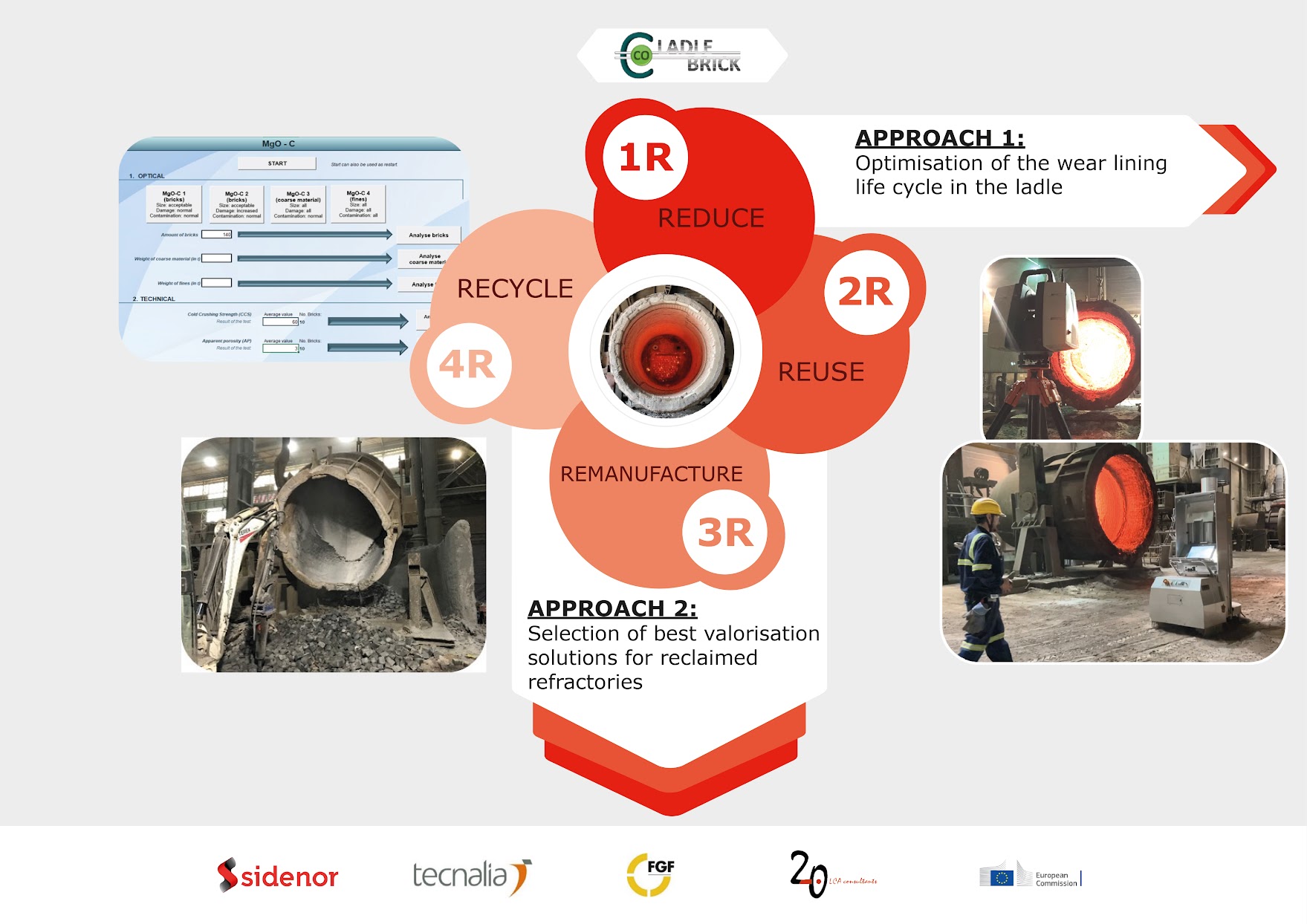
The work carried out within the framework of the European E-CO-LadleBrick project, coordinated by Sidenor R&D, has been very relevant for the achievement of an economic and ecological refractory waste management from the ladles. In this management, Circular Economy criteria have been applied based on the environmental model of the 4Rs: Reduce, Reuse, Remanufacture and Recycle.
To tackle this ambitious objective, a budget of 1,280,225.6 € has been financed by the European Commission through the RFCS programme; and with the collaboration of other 3 European partners: the Tecnalia technology centre, the German research centre specialised in refractories FGF, and the Danish company 2.0 LCA Consultants dedicated to carrying out Life Cycle Analyses.
The focus of the project has been based on two distinct lines of research:
- Reduce: optimise the life cycle of the ladle refractory to reduce the amount of waste generated.
- Reuse, Remanufacture and Recycle: to determine, from a technical, environmental and economic point of view, the best valorisation solution for each type of waste.
Firstly, in order to extend the useful life of refractory bricks in ladles and reduce the waste generated, it is necessary to know the remaining thickness during their activity, thta is, heat by heat. To this end, Tecnalia has developed a low-cost 3D laser scanner with which it has monitored several cycles in the steelworks. These measurements have been complemented with those carried out using a commercial equipment, the Ferrotron LaCam model, to develop a predictive model of the useful life and remaining thickness of the ladle brick.
For the refractory waste generated, a Decision Algorithm has been developed, which takes into account the visual appearance of the bricks, the mechanical properties and the economic and ecological impact of the activities necessary for their valorisation, so as to be more efficient and to know the best alternative in each case.
The actions carried out in this project have generated significant environmental and economic benefits; more than 30 new applications for valorisation have been identified, the wear behaviour of each area of the ladle has been studied, thus enabling its useful life to be extended, and “Zero Waste” has been achieved for the ladle refractories. This project is one of the last stages of a journey that began 11 years ago thanks to the excellent work of the Sidenor operational staff from the meltshop, which has placed our company as a world reference in the Management of Refractory Waste, reaching global levels of valorisation of this waste of over 90%.

